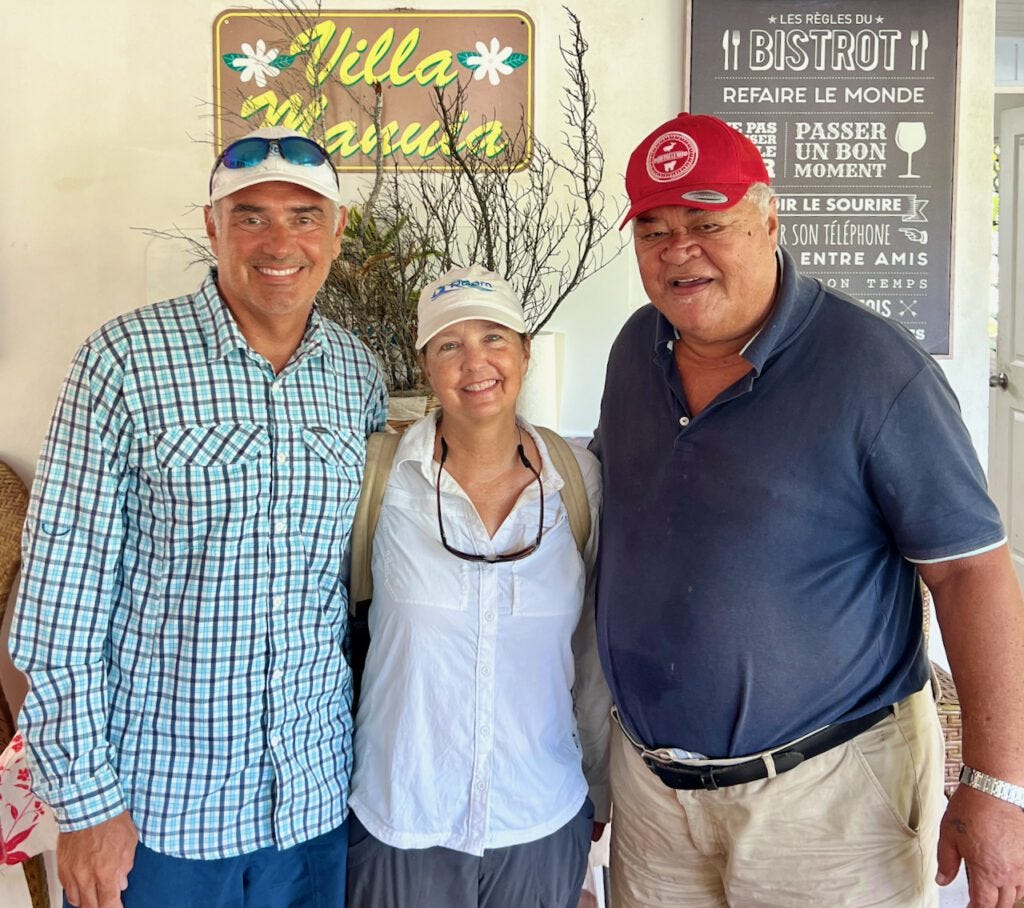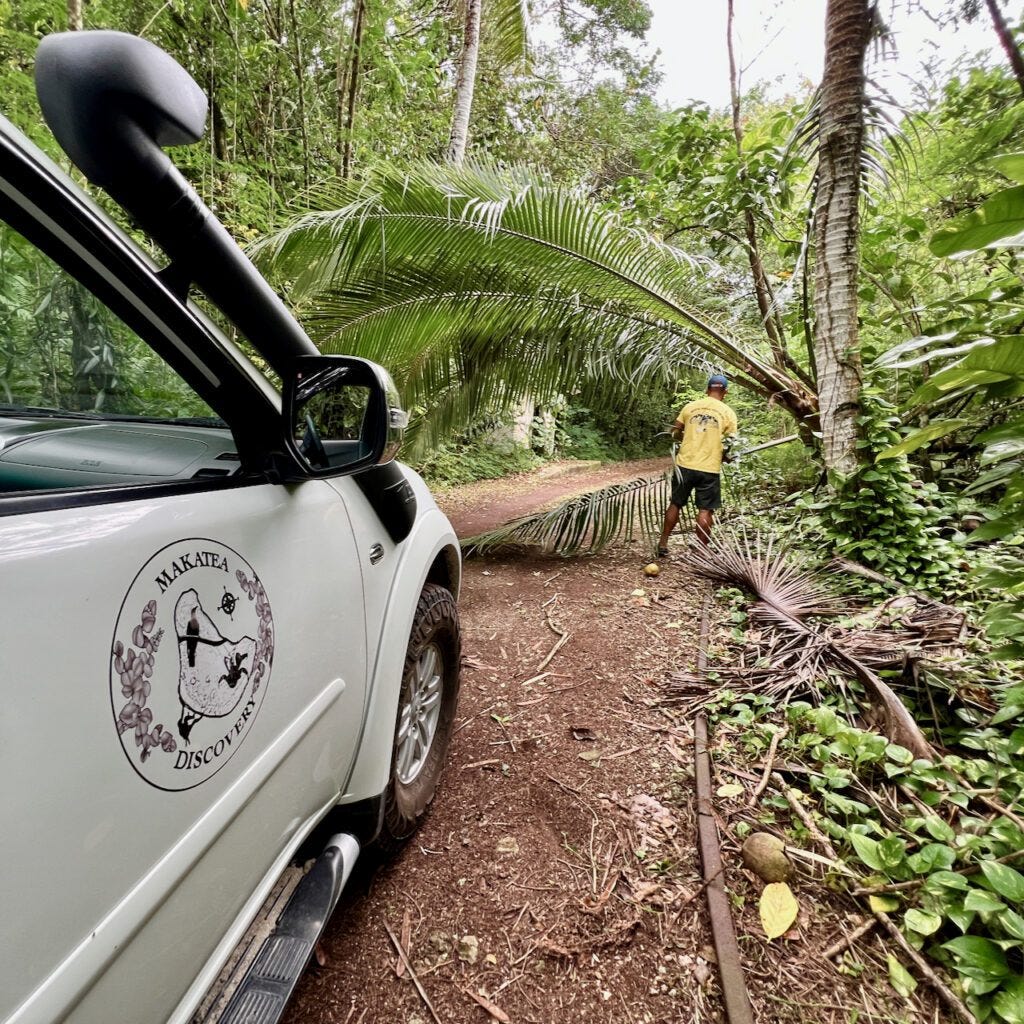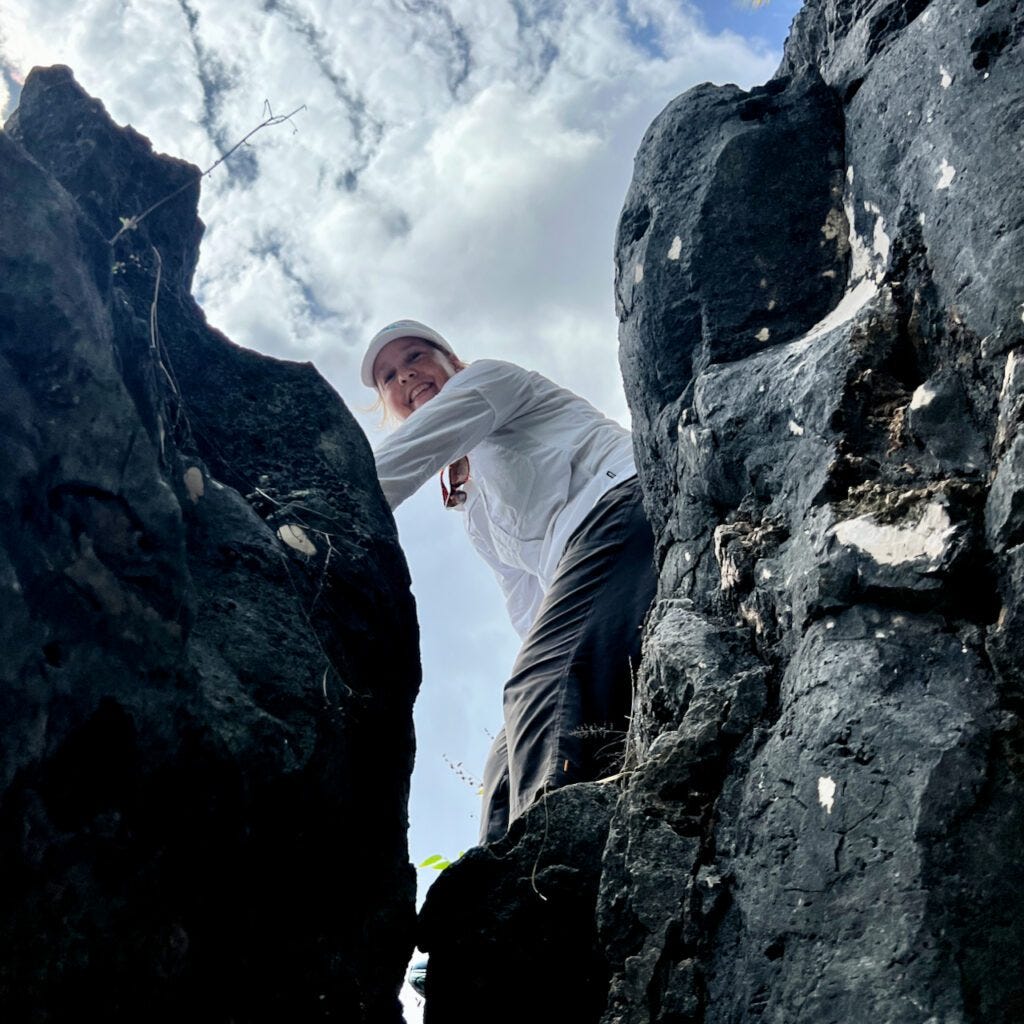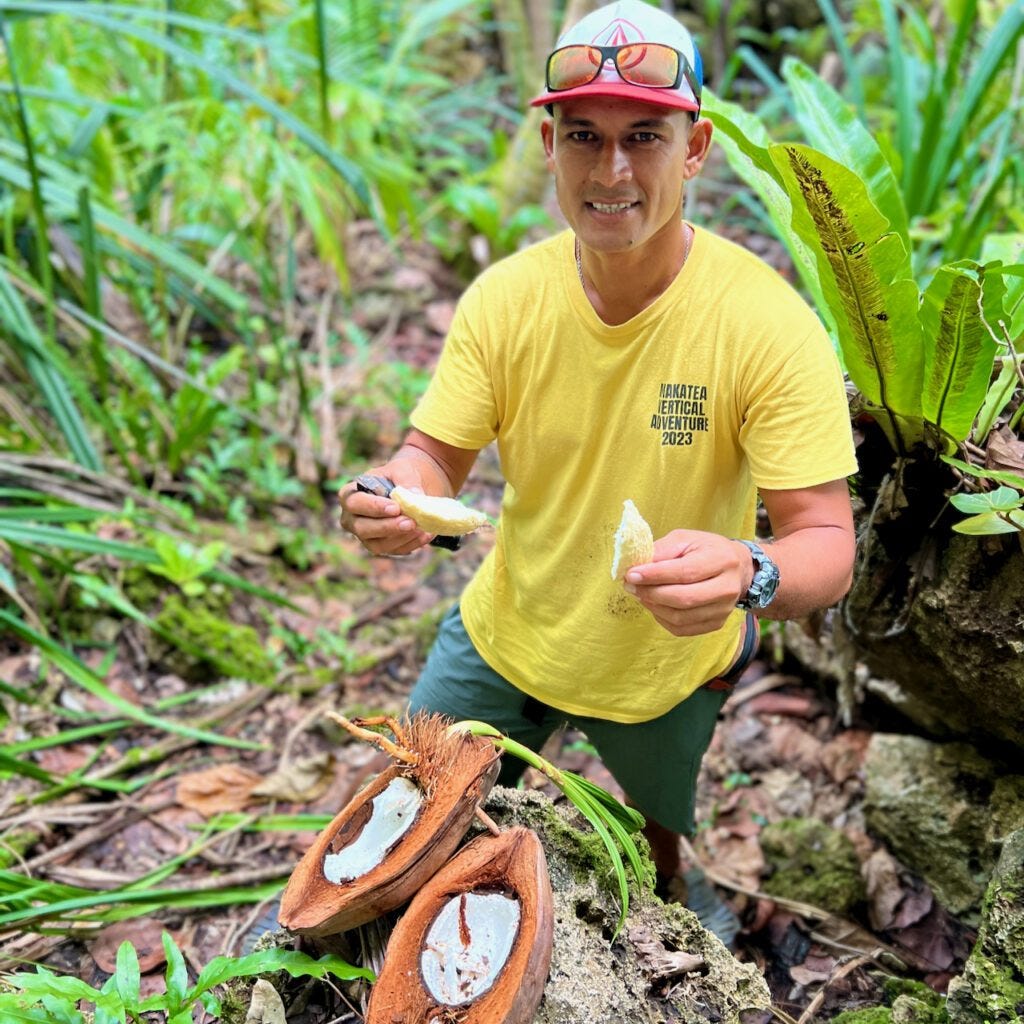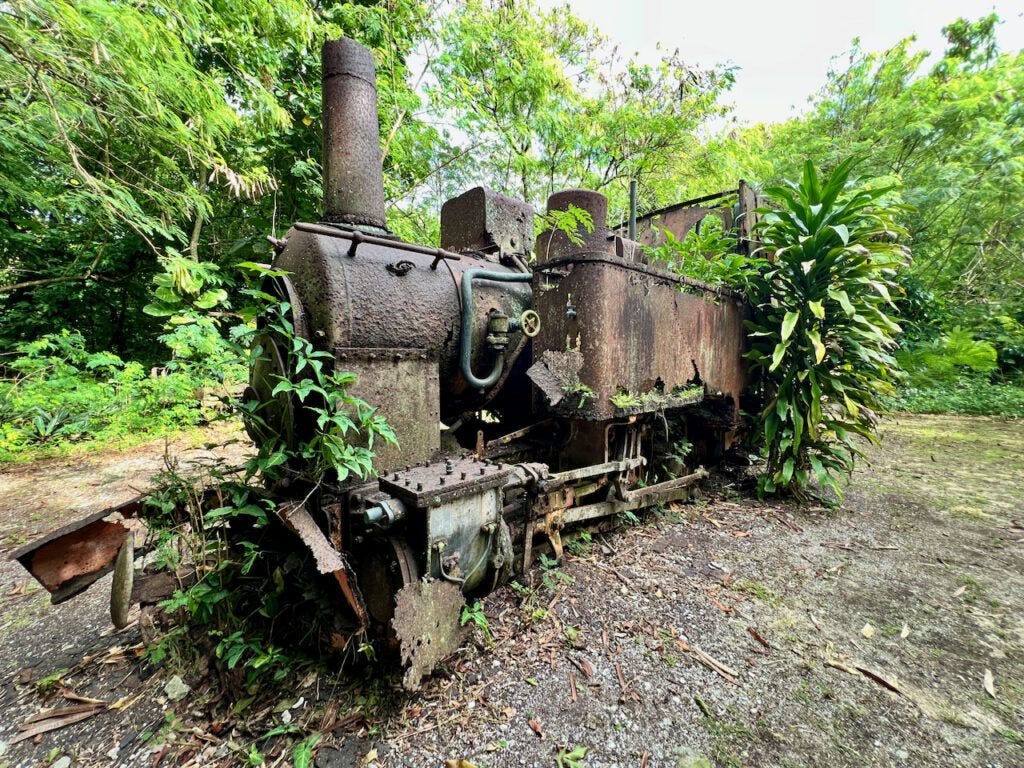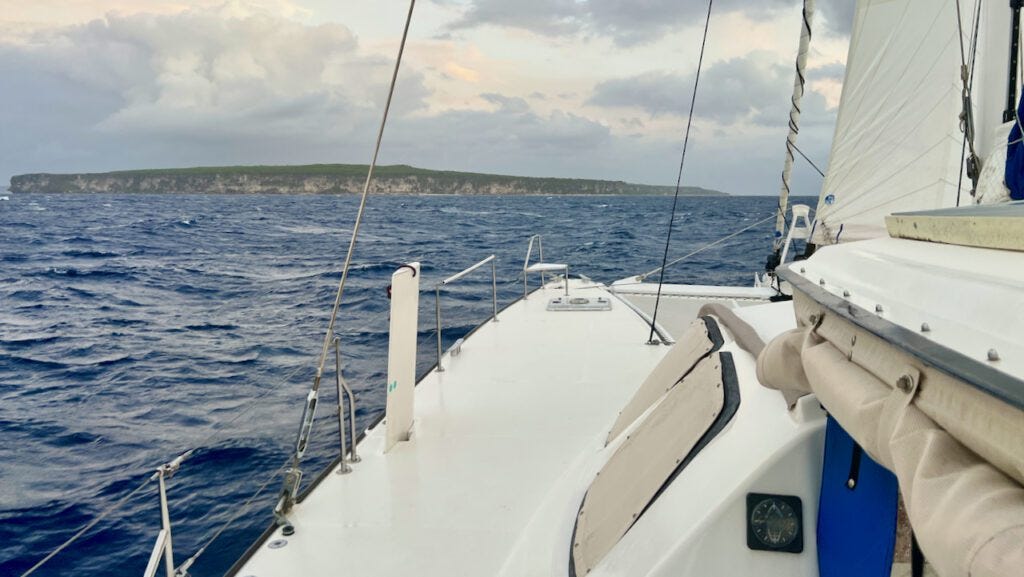Makatea
The Adventures of the Sailing Vessel Roam
One day in 1966, phosphate mining operations ceased on the island of Makatea in the Tuamotu archipelago of French Polynesia. Within a few weeks, the island's population dwindled from over 3,000 to less than 100. In the preceding 60 years, miners hand-dug over 11.5 million tons of phosphate sand from between the coral pillars atop the island. And left it that way.
The tradesmen and laborers moved on. Some went to work in the French nuclear testing program on nearby Mororua atoll, some went to mine manganese in Vanuatu, and a few went to work in the growing tourism industry in Tahiti.
We spent a day touring Makatea with Heitapu Mai, a guide and son of the island's mayor, Julien Mai. "Tapu" was delightful. He was easygoing, knowledgeable, had a great sense of humor, and had an infectious laugh. We rode around the island in his Mitsubishi diesel pickup. He took us to see the mining ruins, a clear-water cave, and a hike up the cliffside on a trail locals use for coconut crab hunts.
Tapu is helping to lead the charge in Makatea's emerging eco-tourism industry. He heads the Makatea Escalade, a rock climbing association, and hosts the Vertical Adventure Festival each September.
After our island tour, Tapu arranged lunch with the island's mayor, Julien Mai. We sat at a table on the porch of his guest house and talked about his past (he was a Polynesia dance troupe promoter), his five terms as the island's mayor, its history, and its hopeful future.
Makatea is singularly unique as an island in the Tuamotus. The island's vertical cliffs rise 260 feet out of the ocean. Two million years ago, the weight of nearby Tahiti and the society islands depressed the seafloor and popped Makatea up and out of the sea. You can see the pillars of what was once a massive coral garden everywhere on top of the island, 200 feet in the air.
It stands in contrast to the other atolls in the Tuamotus, which are flat, low-lying coral rings around a lagoon. Makatea is the opposite. When you make landfall, it looks like it is floating on top of the ocean.
It's too deep to anchor there. The island provides four moorings for visiting yachts. They hope to add six more this year.

Over a million holes remain from the mining. Most are 50 to 75 feet deep, with some as deep as 250 feet. Fall in, and you are likely not coming home. And that is the challenge Makatea has now. Millions of holes all over the island.
The mayor invited us to attend an evening dance performance by the school children—all nine of them, ages 6 to 14—and one teacher from Huahine on a five-year contract. It was a treat for us. Pam baked chocolate chip cookies as a thank-you gift to the kids for having us.
The parents were quite involved in the performance. The island moms had several dance numbers, and even the dads joined the boys for one dance.
Good mayors solve problems for their constituents. Maybe you are trying to get your kid into the boarding school in neighboring Rangiroa, but the bureaucrat in Tahiti won't call you back. The mayor will get things moving for you. He deals with a lot of this kind of thing. But not much crime. The population of 136 doesn't even have a gendarme.
The mayor also has to offer a vision for the future. For Mayor Mai, that's where things are changing. For many years, a proposal to restart mining operations has been under consideration.
A New Zealand company proposed to spend the next thirty years grinding off the top of the coral pillars, extracting the phosphate rock, and filling the holes left by the previous mining operations with the rock tailings. The island would get rehabilitated. The value of the extracted phosphate rock would cover the cost. It would probably work. It's not a popular proposal with the land owners and residents (and there aren't many of them). You can understand why.
The mayor supported the proposal at first. It would create jobs and solve the problem of a million holes. It would create new roads and an airport. But his mind is changing. He is seeing firsthand the popularity of eco-tourism, particularly rock climbing. He thinks this may be the path forward for Makatea. I admire any politician (or anyone, really) willing to change their mind in the face of new information.
Makatea is tough to get to. It doesn't have an airport. You get to it by boat from Tahiti, 135 miles away, or Rangirora, 60 miles away. It took us an entire day to sail there from Tikehau. It would take A LOT of eco-tourists to make an impact.
It's a nice idea, and it promises a hopeful future. I'm skeptical, but hey, you've got to have dreams.
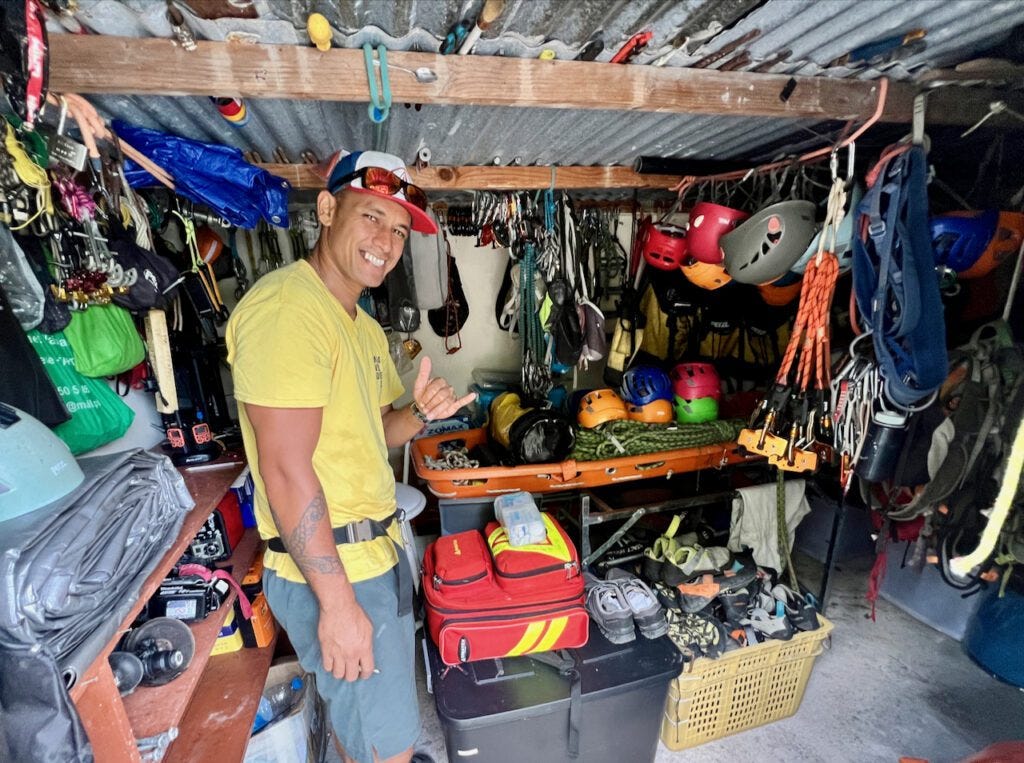


Excerpts From Our Log:
Makatea
Tue Jul 02 2024 18:20:00 GMT-1000 (Tahiti Time)
15 49.449S 148 16.750W
All is well. We are presently tied to a mooring just outside the harbor on the Makatea atoll, Tuamotus, French Polynesia.
We had a wet and rough 50 mile close reach from Tikehau in 18-25 knots of wind and 8’ seas with a double reefed main and a reefed Solent. The boat did great and we did ok. We haven’t been offshore in big seas in awhile so we are both less than 100%.
We reached the mooring field just after sunset in the fading light. Pam snagged the mooring on the first try. This is a very deep anchorage (90’) thus the moorings. We are unnervingly close to the rocks. We are here with two other boats.
Tomorrow we will spend the morning touring the island with the mayor, Julian. And have lunch.
For now, dinner, a hot shower, bed.
—Jim




